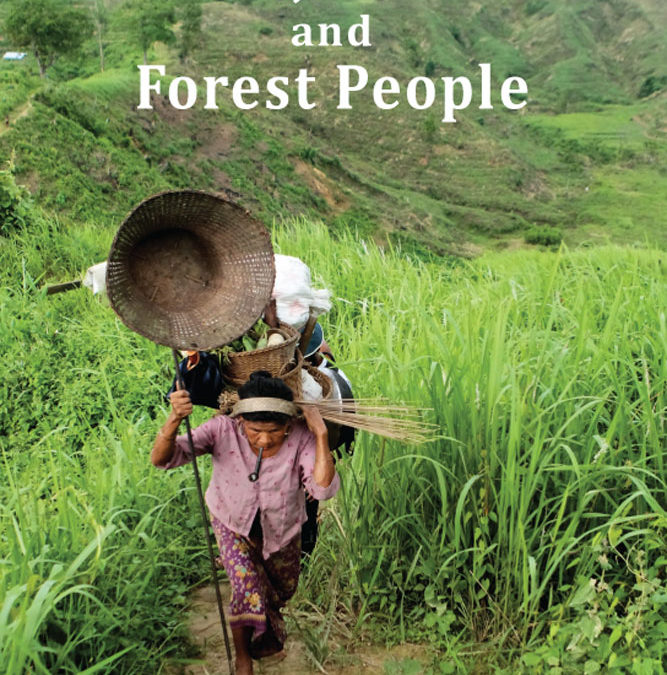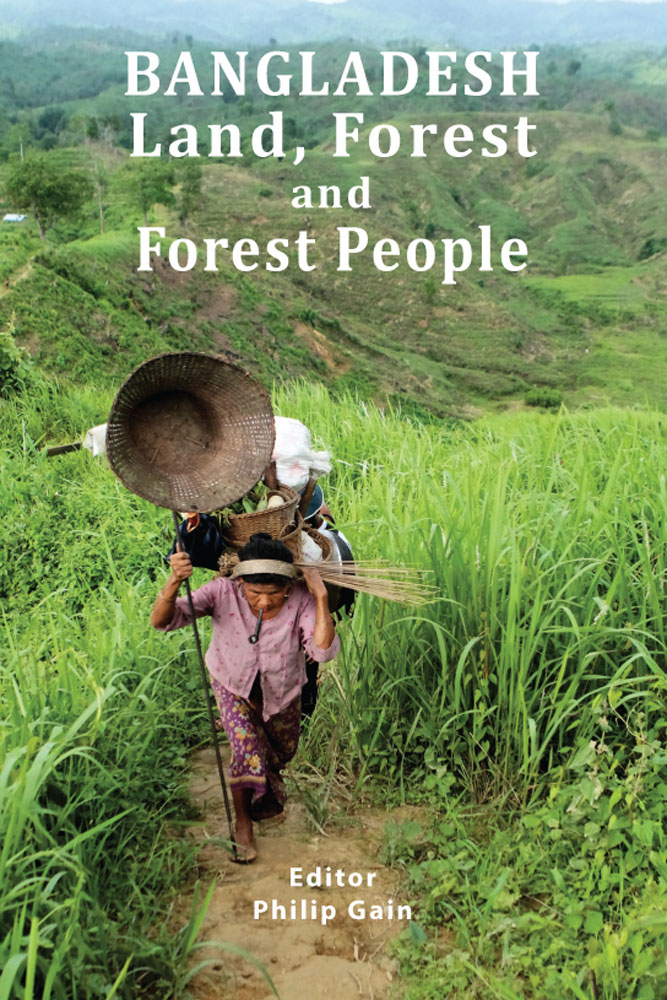
Bangladesh: Land, Forest and Forest People (3rd edition)
Bangladesh is amazingly green. However, at the same time, it is a forest-poor country. Officially, 18% of the country (2.6 million hectares) is public forestland. 2013, English 284 pages(3rd edition), Paperback | Tk.300 / US$15
 Bangladesh is amazingly green. However, at the same time, it is a forest-poor country. Officially, 18% of the country (2.6 million hectares) is public forestland. This is the same area of land mass recorded as forestland when the Forest Act of 1927 was framed. However, in reality, approximately only 6% is said to be covered by forests. This includes plantations of 403,458 ha since 1873. According to the Forest Department estimate of 2001, it controls 10.3 per cent of the land surface.
Bangladesh is amazingly green. However, at the same time, it is a forest-poor country. Officially, 18% of the country (2.6 million hectares) is public forestland. This is the same area of land mass recorded as forestland when the Forest Act of 1927 was framed. However, in reality, approximately only 6% is said to be covered by forests. This includes plantations of 403,458 ha since 1873. According to the Forest Department estimate of 2001, it controls 10.3 per cent of the land surface.
This book, a compendium, is about the forests of Bangladesh and the peoples who live there and how they are affected by the continued pillaging of our forest resources. Most of the adivasis of Bangladesh lived in the forests at one time. The forests were their commons and they had no trouble making a living out of jum (slash and burn or swidden) agriculture, hunting, and gathering. But today, the state has taken control of what used to be their ancestral land. The state laws, rules, and institutions no longer recognize their communal ownership. The state has also sponsored the migration and settlement of Bangalees into the forests that has caused severe environmental degradation and has displaced communities indigenous to the forests. Development projects and monoculture plantations on the forestland have also progressively exhausted the forest resources and deprived the forest dependent communities of their free access to the commons.
The Society for Environment and Human Development (SEHD), from its inception in 1993, has paid special attention to issues concerning forests and forest-dwelling communities who are faced with enormous difficulties as a result of the degradation of forests, the denial of customary rights and the invasion of monoculture plantations. Since the publication of the second edition of this book in 1998, the damaging practices on forestland have escalated up to the point of no return. SEHD has continuously documented the consequences of these damaging practices with special emphasis on plantation projects and has engaged a great deal of its time and resources in working with indigenous communities. Although it was too late in many respects, the international financial institutions (Asian Development Bank and World Bank) did eventually stop funding plantation projects in Bangladesh since 2007. However, irrecoverable damage had already been done. The adivasis or indigenous peoples continue to face hostility from the state and witness their access to land and forest resources continue to diminish.
The third edition, enriched with many new reports, stories, and analyses, will help its readers better understand forest related issues as well as the life and struggle of the peoples who still cling to the forests materially, culturally, and psychologically.
A galaxy of researchers, writers, and journalists who have contributed write-ups and reports to this book present facts, anecdotes, and analyses about the degradation of forests, its underlying factors, and how the forest dependent communities are severely threatened on their ancestral land.
Contributors to the book: Kibriaul Khaleque, Ph.D. (late), Philip Gain, Raja Devasish Roy, Mohiuddin Farooque Ph.D. (late), Mizanur Rahman (late), Brother Jarlath D’Souza, Abigail Haworth, Mohammad Tanzimuddin Khan, Amy Koenig, Partha Shankar Saha, Shekhar Kanti Ray, and Debashish Majumder.
Publication Details
Published: 2013
Language: English
Paperback: 284 pages
Edited by: Philip Gain
Price: Tk.300 / US$15
